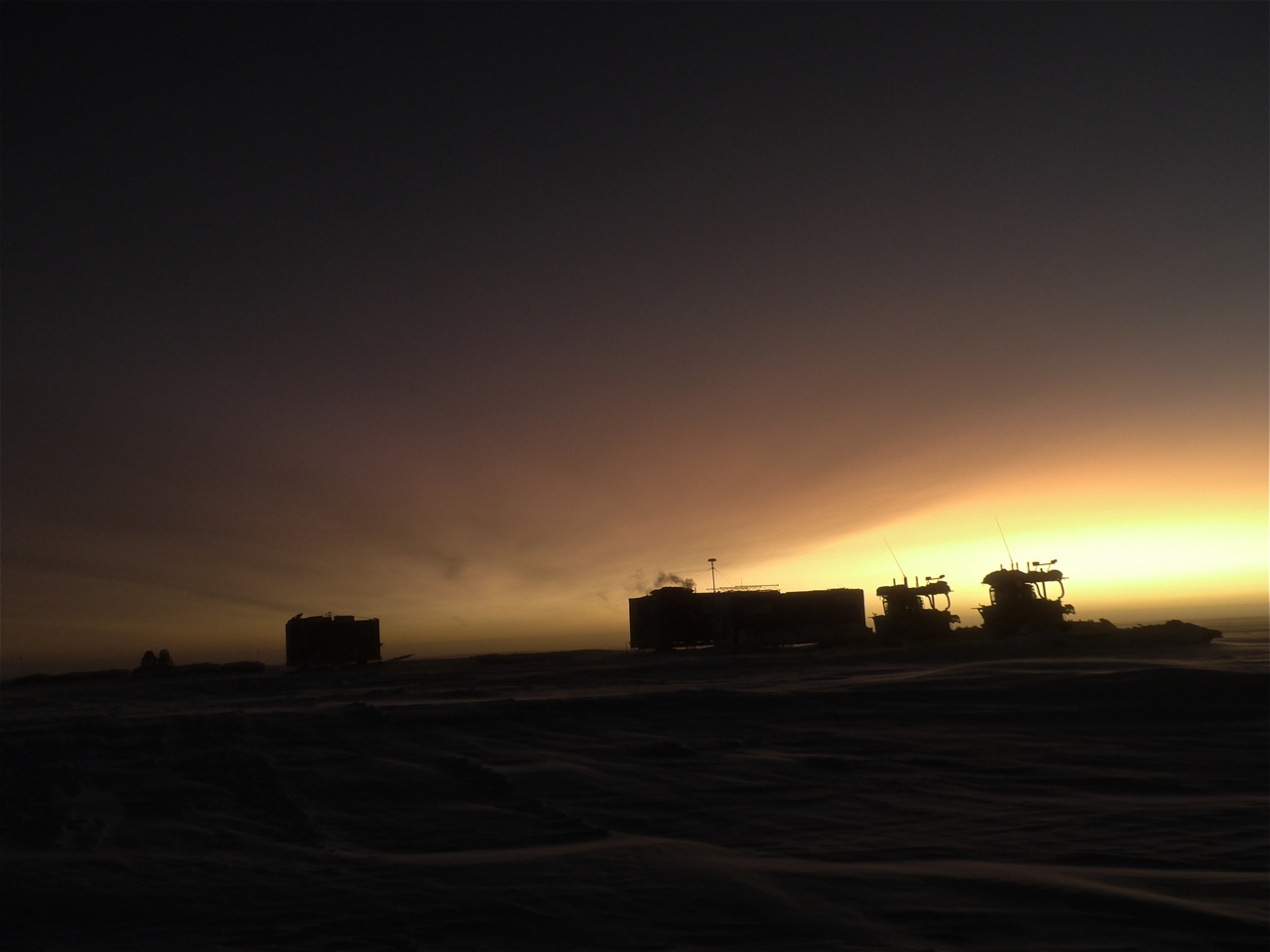One of the most daring expeditions to launch in recent years has been the attempt by a team of Brits to cross Antarctica during the dead of winter – something that has never been accomplished before. The expedition, which has been dubbed the Coldest Journey, set out in March with Brian Newham, Ian Prickett, Richmond Dykes, Rob Lambert and Spencer Smirl all hoping to become the first to traverse the continent during the harshest and most demanding time of the year. I have posted a few updates on their progress over the past few months, with the most recent coming just last week. Those updates revealed that this challenge was every bit as daunting as we expected, with incredibly bad weather and treacherous surface conditions all conspiring to slow progress to a crawl. Yesterday the team’s support crew back in the U.K. announced that the were putting a halt to the expedition while they assess what they will do next.
The biggest problem that the team has faced are the crevasses that spider-web across the area that they are currently traveling through. This crevasse field is so bad that they think it could stretch for 100 km (62 miles) around them. Add in the fact that the sun has now set on the Antarctic winter, leaving the men in the dark most of the time. That perpetual darkness has made it very difficult to spot the dangerous crevasses, which has slowed progress even further. With all of that in mind, the following blog post was published yesterday:
Having consolidated a position on safe ground away from the crevasses, the Ice Team are taking stock of their situation. It is clear from their recent reconnaissance work that the terrain to the south is a complex and uncharted mass of crevasses which are hard to detect in the darkness, covered, as they are, by snow bridges. Painstaking efforts have been made with the ground penetrating radar (GPR) to plot a safe route through the crevasse field which it is believed may extend for up to 100kms to the south of the present position. The situation is made all the more concerning because the efforts required to navigate and haul their many tons of essential equipment and supplies through such treacherous terrain means that they risk forfeiting much of the unique scientific work which they have been commissioned to undertake throughout the winter months. In view of this dilemma, further careful assessment is being made to decide on a workable strategy. A decision needs to be reached having researched all the relevant factors which include the safety aspects as well as the feasibility of achieving and/or prioritising all of the expedition’s aims. Such a decision needs time. For now, the team will remain where they are and continue to undertake their science and medical work while developing a plan for the months ahead. All of us at HQ wish the team well at this frustrating time. We shall keep you posted with developments as they occur.
So there you have it. It seems the expedition has likely come to an end, at least in the sense that there really is no way for them to cross Antarctica completely in winter. They will continue to collect data about the region they are in as part of the scientific elements of their mission, but progress has been so slow and dangerous that it is probably for the best that they abandon the crossing and play it safe for now.
The problem is, they really can’t come home yet either. Conditions are so bad there right now that it would be impossible for them to be retrieved from the ice. So for the immediate future they’ll have to stay where they are, stuck in limbo indefinitely. Fortunately they have plenty of food, supplies and shelter to keep them safe while they continue their research. How long they’ll have to wait for an opportunity to come home remains to be seen, but I get the sense that they’ll try to take advantage of the time that they have there and accomplish whatever they can.
Good luck to the team now more than ever. While progress had been difficult and slow before, at least they were going somewhere. Sitting and waiting at their current position may be the most challenging aspect of the journey that they’ve faced so far.
- Gear Review: The Xero Scrambler Mid is an Ultralight Hiking Shoe for Spring - March 1, 2023
- Gear Review: Yeti Roadie 48 Wheeled Cooler - August 18, 2022
- Kristin Harila Continues Pursuit of 8000-Meter Speed Record - August 16, 2022
